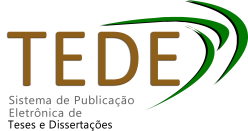| Compartilhamento |


|
Use este identificador para citar ou linkar para este item:
http://www.bdtd.ueg.br/handle/tede/413Registro completo de metadados
| Campo DC | Valor | Idioma |
|---|---|---|
| dc.creator | Morais, Ronny José de | - |
| dc.creator.Lattes | http://lattes.cnpq.br/3529316843970358 | por |
| dc.contributor.advisor1 | Teresa, Fabrício Barreto | - |
| dc.contributor.advisor1Lattes | http://lattes.cnpq.br/2706179711969560 | por |
| dc.contributor.referee1 | Benedito, Evanilde | - |
| dc.contributor.referee2 | Montag, Luciano Fogaça de Assis | - |
| dc.contributor.referee3 | Santos, Solange Xavier dos | - |
| dc.contributor.referee4 | Carneiro, Fernanda Melo | - |
| dc.contributor.referee5 | Teresa, Fabrício Barreto | - |
| dc.date.accessioned | 2021-03-24T18:32:18Z | - |
| dc.date.issued | 2020-02-28 | - |
| dc.identifier.citation | MORAIS, Ronny José. Ciclagem de nutrientes por peixes em riachos neotropicais. 2020. 155 f. Tese ( Doutorado em Recursos Naturais do Cerrado ) - Câmpus Central - Sede: Anápolis - CET, Universidade Estadual de Goiás, Anápolis-GO. | por |
| dc.identifier.uri | http://www.bdtd.ueg.br/handle/tede/413 | - |
| dc.description.resumo | Neste estudo avaliamos a importância dos peixes para a ciclagem de nutrientes em riachos neotropicais buscando identificar os principais fatores determinantes das taxas de excreção. Abordamos a ciclagIn this study, we evaluated the importance of fish for nutrient cycling in neotropical streams, seeking to identify the main factors determining excretion rates. We approach the cycling of nutrients on an individual and ecosystem scale in different chapters of the thesis and to them we add a chapter in game format in an accessible and playful language to highlight the importance of fish in the cycling of nutrients in streams. We conducted the study in neotropical streams located in and around the Serra dos Pireneus Environmental Protection Area. Thus, we structured the Thesis in three chapters. In CHAPTER I, we tested whether intrinsic (characteristics of individuals) and extrinsic (environmental characteristics) factors can explain the variation in the excretion of fish in streams. We model the excretion of nutrients (per capita and specific mass) in function of intrinsic factors, such as mass, diet of allochthonous invertebrates and phylogenetic kinship, and extrinsic as concentration of nutrients in the environment (N and P), Habitat Physical Integrity Index, Water Quality Index and percentage of natural and anthropic vegetation. Our results showed that the excretion of fish can be particularly influenced by its intrinsic characteristics, especially by the mass of the species and the phylogenetic kinship. In CHAPTER II, we evaluate the contribution of fish to nutrient cycling taking into account the nutrient demand of streams. We have shown that fish contribute significantly to the nutrient cycling of Cerrado streams. This contribution is even more important in more conserved and oligotrophic streams, where fish exceed the demand for nutrients in the environment. Small lambaris (tetras), allochthonous insectivores are dominant in these streams and are responsible for most of the nutrients excreted by the community. In CHAPTER III, we created a game, Fish Pee, in order to promote scientific divulgation through the synthesis of the main results obtained in the previous chapters. We relate different ecological concepts through a playful language and accessible to different audiences.em de nutrientes numa escala individual e ecossistêmica em capítulos distintos da tese e a eles acrescentamos um capítulo em formato de jogo numa linguagem acessível e lúdica para evidenciar a importância dos peixes na ciclagem de nutrientes em riachos. Conduzimos o estudo em riachos neotropicais localizados na Área de Proteção Ambiental da Serra dos Pireneus e em seu entorno. Assim, estruturamos a Tese em três capítulos. No CAPÍTULO I, testamos se os fatores intrínsecos (características dos indivíduos) e extrínsecos (características ambientais) podem explicar a variação na excreção de peixes em riachos. Modelamos a excreção de nutrientes (per capita e massa específica) em função dos fatores intrínsecos, como peso, dieta de invertebrados alóctones e parentesco filogenético, e extrínsecos como concentração de nutrientes no ambiente (N e P), Índice de Integridade Físico do Hábitat, Índice de Qualidade da Água e percentual de vegetação natural e antrópica. Nossos resultados evidenciaram que a excreção dos peixes pode ser particularmente influenciada por suas características intrínsecas, especialmente pelo peso das espécies e pelo parentesco filogenético. No CAPÍTULO II, avaliamos a contribuição dos peixes para a ciclagem de nutrientes levando em consideração a demanda de nutrientes dos riachos. Mostramos que os peixes contribuem de forma expressiva para a ciclagem de nutrientes dos riachos do Cerrado. Essa contribuição é ainda mais importante em riachos mais conservados e oligotróficos, onde os peixes excedem a demanda por nutrientes do ambiente. Os pequenos lambaris (tetras), insetívoros alóctones são dominantes nesses riachos e são responsáveis pela maior parte dos nutrientes excretados pela comunidade. No CAPÍTULO III, elaboramos um jogo, Fish Pee, com o intuito de promover a divulgação científica por meio da síntese dos principais resultados obtidos nos capítulos anteriores. Relacionamos diferentes conceitos ecológicos por meio de uma linguagem lúdica e acessível aos distintos públicos. | por |
| dc.description.abstract | In this study, we evaluated the importance of fish for nutrient cycling in neotropical streams, seeking to identify the main factors determining excretion rates. We approach the cycling of nutrients on an individual and ecosystem scale in different chapters of the thesis and to them we add a chapter in game format in an accessible and playful language to highlight the importance of fish in the cycling of nutrients in streams. We conducted the study in neotropical streams located in and around the Serra dos Pireneus Environmental Protection Area. Thus, we structured the Thesis in three chapters. In CHAPTER I, we tested whether intrinsic (characteristics of individuals) and extrinsic (environmental characteristics) factors can explain the variation in the excretion of fish in streams. We model the excretion of nutrients (per capita and specific mass) in function of intrinsic factors, such as mass, diet of allochthonous invertebrates and phylogenetic kinship, and extrinsic as concentration of nutrients in the environment (N and P), Habitat Physical Integrity Index, Water Quality Index and percentage of natural and anthropic vegetation. Our results showed that the excretion of fish can be particularly influenced by its intrinsic characteristics, especially by the mass of the species and the phylogenetic kinship. In CHAPTER II, we evaluate the contribution of fish to nutrient cycling taking into account the nutrient demand of streams. We have shown that fish contribute significantly to the nutrient cycling of Cerrado streams. This contribution is even more important in more conserved and oligotrophic streams, where fish exceed the demand for nutrients in the environment. Small lambaris (tetras), allochthonous insectivores are dominant in these streams and are responsible for most of the nutrients excreted by the community. In CHAPTER III, we created a game, Fish Pee, in order to promote scientific divulgation through the synthesis of the main results obtained in the previous chapters. We relate different ecological concepts through a playful language and accessible to different audiences. | eng |
| dc.description.provenance | Submitted by Sandra Barbosa (sandra.barbosa@ueg.br) on 2021-03-24T18:30:47Z No. of bitstreams: 3 license.txt: 2109 bytes, checksum: b76a28645f58b21aeda00ac459312a65 (MD5) Tese_Versão Final_Ronny José de Morais.pdf: 11377406 bytes, checksum: 0e0e74c0fb3ff2c9aa554caaef13bd25 (MD5) 2. TERMO_DE_AUTORIZACAO_PARA_PUBLICACAO_DE_TESES_E_DISSERTACOESES_NA_BIBLIOTECA_DIGITAL_BDTDUEG_Ronny José de Morais (1) (1).pdf: 552181 bytes, checksum: 10be110780b240079382bcce43955726 (MD5) | eng |
| dc.description.provenance | Approved for entry into archive by Sandra Barbosa (sandra.barbosa@ueg.br) on 2021-03-24T18:31:23Z (GMT) No. of bitstreams: 3 license.txt: 2109 bytes, checksum: b76a28645f58b21aeda00ac459312a65 (MD5) Tese_Versão Final_Ronny José de Morais.pdf: 11377406 bytes, checksum: 0e0e74c0fb3ff2c9aa554caaef13bd25 (MD5) 2. TERMO_DE_AUTORIZACAO_PARA_PUBLICACAO_DE_TESES_E_DISSERTACOESES_NA_BIBLIOTECA_DIGITAL_BDTDUEG_Ronny José de Morais (1) (1).pdf: 552181 bytes, checksum: 10be110780b240079382bcce43955726 (MD5) | eng |
| dc.description.provenance | Approved for entry into archive by Sandra Barbosa (sandra.barbosa@ueg.br) on 2021-03-24T18:31:54Z (GMT) No. of bitstreams: 3 license.txt: 2109 bytes, checksum: b76a28645f58b21aeda00ac459312a65 (MD5) Tese_Versão Final_Ronny José de Morais.pdf: 11377406 bytes, checksum: 0e0e74c0fb3ff2c9aa554caaef13bd25 (MD5) 2. TERMO_DE_AUTORIZACAO_PARA_PUBLICACAO_DE_TESES_E_DISSERTACOESES_NA_BIBLIOTECA_DIGITAL_BDTDUEG_Ronny José de Morais (1) (1).pdf: 552181 bytes, checksum: 10be110780b240079382bcce43955726 (MD5) | eng |
| dc.description.provenance | Made available in DSpace on 2021-03-24T18:32:18Z (GMT). No. of bitstreams: 3 license.txt: 2109 bytes, checksum: b76a28645f58b21aeda00ac459312a65 (MD5) Tese_Versão Final_Ronny José de Morais.pdf: 11377406 bytes, checksum: 0e0e74c0fb3ff2c9aa554caaef13bd25 (MD5) 2. TERMO_DE_AUTORIZACAO_PARA_PUBLICACAO_DE_TESES_E_DISSERTACOESES_NA_BIBLIOTECA_DIGITAL_BDTDUEG_Ronny José de Morais (1) (1).pdf: 552181 bytes, checksum: 10be110780b240079382bcce43955726 (MD5) Previous issue date: 2020-02-28 | eng |
| dc.description.sponsorship | Fundação de Apoio à pesquisa do Estado de Goiás - FAPEG | por |
| dc.format | application/pdf | * |
| dc.language | por | por |
| dc.publisher | Universidade Estadual de Goiás | por |
| dc.publisher.department | UEG ::Coordenação de Doutorado em Recursos Naturais do Cerrado | por |
| dc.publisher.country | Brasil | por |
| dc.publisher.initials | UEG | por |
| dc.publisher.program | Programa de Pós-Graduação Stricto sensu em Recursos Naturais do Cerrado RENAC | por |
| dc.rights | Acesso Aberto | por |
| dc.subject | Ictiofauna | por |
| dc.subject | Parentesco filogenético | por |
| dc.subject | Demanda de nutrientes | por |
| dc.subject | Divulgação científica | por |
| dc.subject | Jogo de tabuleiro | por |
| dc.subject | Ichthyofauna | eng |
| dc.subject | Phylogenetic kinship | eng |
| dc.subject | Excretion | eng |
| dc.subject | Nutrient demand | eng |
| dc.subject | Scientific divulgation | eng |
| dc.subject | Gameboard | eng |
| dc.subject.cnpq | CIENCIAS BIOLOGICAS | por |
| dc.subject.cnpq | CIENCIAS BIOLOGICAS::ECOLOGIA | por |
| dc.title | Ciclagem de nutrientes por peixes em riachos neotropicais | por |
| dc.title.alternative | Nutrients cycling by fish in neotropical Streams | eng |
| dc.type | Tese | por |
| Aparece nas coleções: | Doutorado em Recursos Naturais do Cerrado (RENAC) | |
Arquivos associados a este item:
| Arquivo | Descrição | Tamanho | Formato | |
|---|---|---|---|---|
| Tese_Versão Final_Ronny José de Morais.pdf | Tese_Doutorado | 11,11 MB | Adobe PDF | Baixar/Abrir Pré-Visualizar |
| 2. TERMO_DE_AUTORIZACAO_PARA_PUBLICACAO_DE_TESES_E_DISSERTACOESES_NA_BIBLIOTECA_DIGITAL_BDTDUEG_Ronny José de Morais (1) (1).pdf | Termo de autorização | 539,24 kB | Adobe PDF | Baixar/Abrir Pré-Visualizar |
Os itens no repositório estão protegidos por copyright, com todos os direitos reservados, salvo quando é indicado o contrário.




